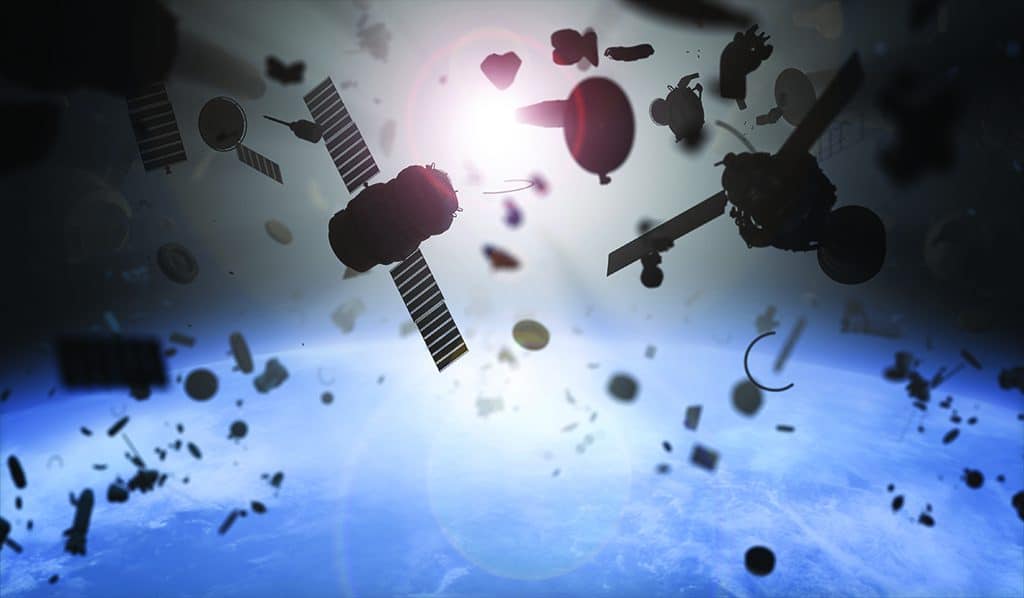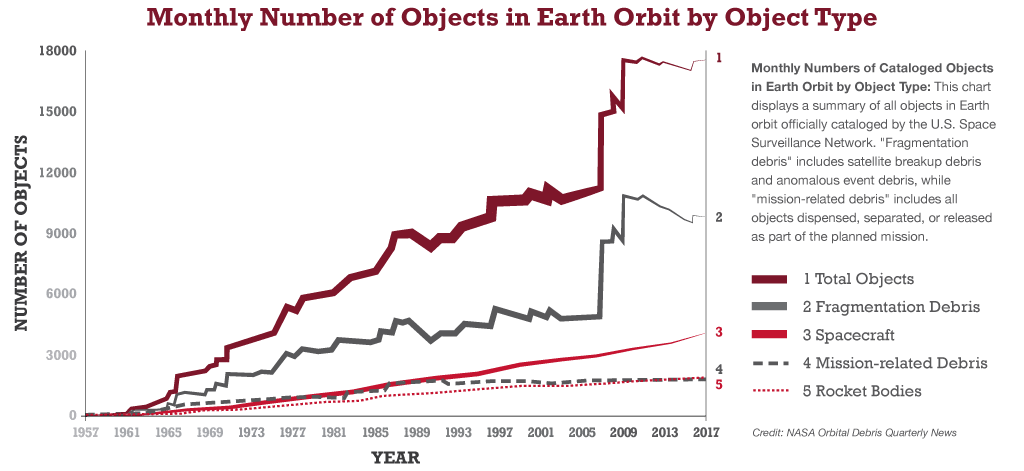Our lives are increasingly reliant on the use of satellites, from real-time communication to seeing the world from outer space. With many “constellations” of tens, hundreds, and even thousands of satellites being proposed over the next decade, Earth’s orbit will become increasingly crowded. So how bad is this problem and how could it be solved?
The Problem
Over 7,200 satellites have been launched to date, but only 1,200 are still functioning. Of the rest, the vast majority are still in orbit and many have fragmented over time. Over 19,000 in-orbit objects are currently tracked and cataloged by the United States Space Surveillance Network, but this is only a small fraction of the estimated total: there are approximately 740,000 objects greater than 1cm in diameter in orbit.

In low Earth orbit, objects travel at about 10 km/s, which means even the smallest of objects carry enough energy to cause potentially catastrophic damage to working spacecraft, and worse, create more debris. While the threat from very small objects (<1 cm) can be prevented by shielding on a spacecraft, larger objects, especially those that cannot be tracked (>1 cm and <10 cm), pose the greatest threat.
The Solution?
The potential solution has two parts: debris mitigation for new objects launched into space and active debris removal (ADR) of existing objects.
Debris mitigation measures need to be considered when planning a space mission. Spacecraft should be designed to avoid any releases or break-ups in orbit and to have enough shielding as far as practicable. The mission should also be designed to take into account collision avoidance and end of life disposal of the spacecraft.
However, debris mitigation measures alone will not stabilize the number of objects. One study suggests that in order to do so, 90% of spacecraft will need to go through post-mission disposal and five large objects will need to be removed from orbit every year beginning in 2020.

There are currently a few different technology concepts being developed for ADR, but with target objects of unknown shape traveling at very high speeds and likely to be rotating, capturing them in zero gravity is rather challenging, to say the least! Thus, an ADR vehicle will require accurate sensors, sophisticated guidance, and navigation and control systems that can carry out precise maneuvers as well as state-of-the-art robotics for capturing target objects. One would also need to carry out risk analysis into whether objects re-entering Earth’s atmosphere would survive the re-entry and if so where the debris might fall.
There are also non-technical questions. Every space object is owned by somebody, so is the owner’s permission needed to remove it? Who is responsible if an ADR mission goes wrong? Will these activities be regulated? If so, by whom? Do you need to warn others that you are carrying out such a mission? Is there a potential for ADR technology to be used for hostile action in orbit?
Despite all the challenges, organizations (new and existing) are working on ADR development and some already have missions planned. Just like the Earth’s atmosphere, a sustainable Earth orbit environment will be important for our future.